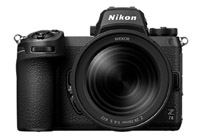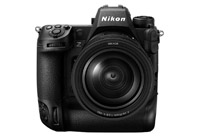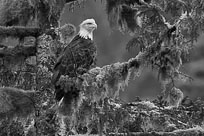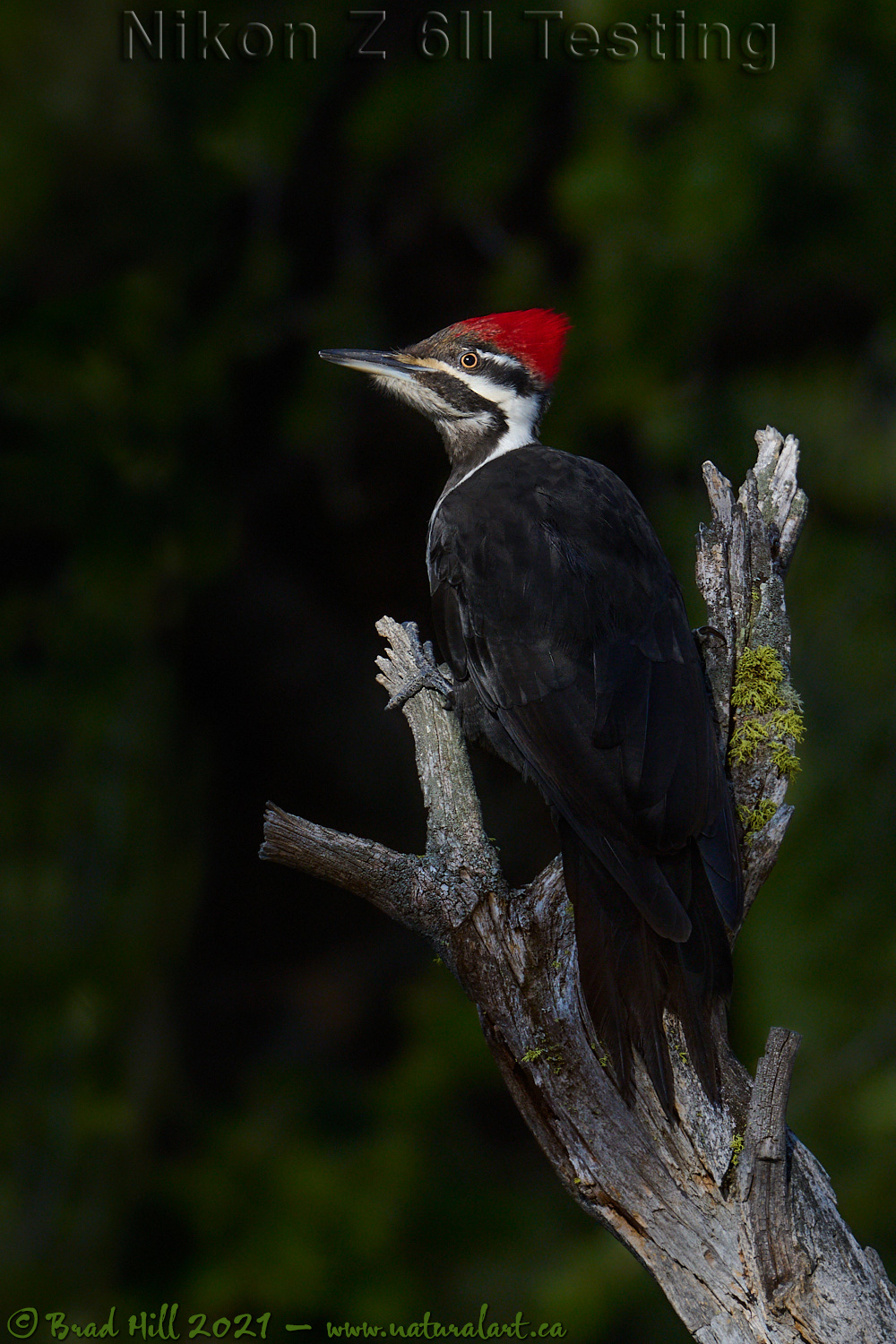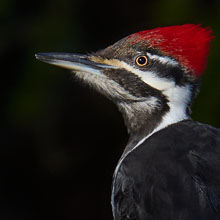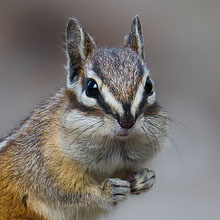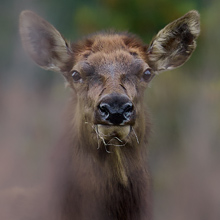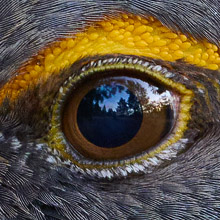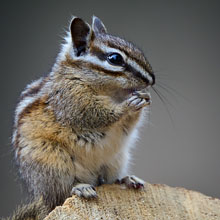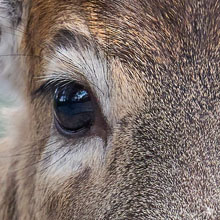Availability: Undetermined - Enquiries?
In the Field
Z 6II Testing - Pileated Woodpecker in First Light of Day. Findlay Creek Region (East Kootenays), British Columbia, Canada. March 21, 2021.
This is my first installment conveying my experiences with shooting wildlife using the Nikon Z 6II. This Pileated Woodpecker shot provides a nice example of how one has to "open up their mind" when shooting wildlife life with a mirrorless camera and, at the same time, discard some pesky ingrained equipment-related biases that many of us have developed over the years of shooting wildlife primarily with DSLR cameras.
Long story short - this image very likely wouldn't have been possible if I was shooting a DSLR of any brand or quality level, including a Nikon D6. At the time I was working on getting some early morning shots of White-tailed Deer with my shiny new Nikon Z 6II paired up with a Nikkor 500mm f5.6E PF super-telephoto lens. Two Pileated Woodpeckers (presumably a mated pair) were hanging around and going from tree-to-tree and perch-to-perch. I had a TC-20EIII (2x) teleconverter with me at the time and, on a lark, I thought "Hey...I wonder what kind of results I'll get if I pair up the 2x TC with my 500mm PF?" Now, this lens/TC combination produces a focal length of 1000mm with a maximum aperture of f11. This small maximum aperture means that this lens/TC combination will completely stymie the AF system of any Nikon (and likely any Canon if you could mount it) DSLR, including the flagship D6. But I knew that, at least in theory, it should work on a Z-series Nikon mirrorless camera.
So...I slapped the combination together and waited for an opportunity to "bag" a Pileated. Well...within a few minutes the female of the pair landed on a low, lichen-laced snag that was half-in and half-out of the first beams of sunlight hitting the ridge-top I was on. I knew I only had a second or two to get the shot so I raised the Z 6II, focused, and fired away (after making a fairly large and quick exposure compensation adjustment based on the brightness of the white streaks on the head as seen through the camera's EVF). About one second later the big "Woody the Woodpecker" took off and the opportunity was gone...
So...how did the AF work? I was using AF-C with Single Point area mode and used a focus point that was quite a ways off-center and...well...the AF system worked really well! As you can see from this hand-held shot, it certainly focused accurately. And...it focused pretty darned quick. No, it didn't focus quite as fast as it would have had I shot the image "native" (i.e., without the TC), but it was absolutely no slouch in speed and I got the shot. And, if I was shooting a DSLR the ONLY way I could have used this lens/TC combination would have been to focus manually...and I can pretty much guarantee you that by the time I had the lens focused the bird would have been long gone. And, if it wasn't gone the odds of me nailing the focus as accurately as the camera had in the time I had to get the shot would have been about one-in-a-zillion!
Like most shooters, as soon as I captured the shot I did a little chimping and checked out how the shot looked on the LCD. "Hmmm" I thought "...not so bad". But I was still thinking "Well...it looks OK on a little LCD, but I'm sure when I get it on the computer I'll be pretty disappointed". Now don't get me wrong - I'm no pessimist, but based on a LOT of experience of shooting the TC-20EIII with a lot of telephoto lenses on DSLR's I knew the hit rate with it of getting really sharp shots was on the low side.
Well...a few hours later I looked at the image in Capture One and I was, quite literally, blown away! The image quality was really, really good. And then I looked at a bunch of shots (including some of those White-tailed Deer) I captured after this one using the same Z 6II plus 500mm PF plus 2x TC 1000mm combination. Those shots included several of small subjects (like chipmunks) at very long distances...which are normally almost impossible shots to pull off effectively with a 2x TC on a long lens on a DSLR. And almost all of them were really sharp with great overall image quality.
Note to self (I thought) - this really changes things...all of a sudden I have a very compact and portable 1000mm lens/TC combination that produces images that are way beyond just "acceptable." I'm sure I had a big smile on my face as all the repercussions of this discovery reverberated through my brain.
Hmmm...maybe there's something to this mirrorless thing after all! ;-)
Here's a larger version (2400 pixel) of Woody:
• Pileated Woodpecker in First Light of Day: Download 2400 pixel image (JPEG: 1.6 MB)
ADDITIONAL NOTES:
1. This image - in all resolutions - is protected by copyright. I'm fine with personal uses of them (including use as desktop backgrounds or screensavers on your own computer), but unauthorized commercial use of the image is prohibited by law. Thanks in advance for respecting my copyright!
2. Like all photographs on this website, this image was captured following the strict ethical guidelines described in The Wildlife FIRST! Principles of Photographer Conduct. I encourage all wildlife photographers to always put the welfare of their subjects above the value of their photographs.
Behind the Camera
Z 6II Testing - Pileated Woodpecker in First Light of Day. Findlay Creek Region (East Kootenays), British Columbia, Canada. March 21, 2021.
Compressed RAW (NEF) 14-bit format; ISO 900.
Nikon Z 6II paired with Nikkor 500mm f5.6E PF super-telephoto lens combined with the TC-20EIII (2x) TC. Hand-held. VR on and in Sport mode. Single Point AF area mode.
1/640s @ f11; -1.67 stop compensation from matrix-metered exposure setting.
At the Computer
Z 6II Testing - Pileated Woodpecker in First Light of Day. Findlay Creek Region (East Kootenays), British Columbia, Canada. March 21, 2021.
RAW Conversion to 16-bit PSD file (and JPEG files for web use), including all global and selective adjustments, using Phase One's Capture One Pro 21. Global adjustments limited to a tweak to color saturation. Selective local adjustments performed using Capture One Pro's layers and masking tools. In this case selective adjustments were made on 10 separate layers and included one or more tweaks to exposure, blacks, shadows, clarity, sharpness, and structure (it's a Capture One thing).
Photoshop modifications were limited to the insertion of the watermark and/or text.
Conservation
Z 6II Testing - Pileated Woodpecker in First Light of Day. Findlay Creek Region (East Kootenays), British Columbia, Canada. March 21, 2021.
Species Status in Canada*: This species is not designated as at risk.
The Pileated Woodpecker (Dryocopus pileatus) is the largest woodpecker over most of its North American range (western Mexico's Imperial Woodpecker is the only larger woodpecker in North America). They are permanent (non-migratory) residents deciduous, coniferous or mixed forests in southern Canada and in the western, midwestern, and eastern portions of the United States.
The Pileated Woodpecker is considered a keystones species and plays a critical role in many forest ecosystems through excavating large cavities used for nesting, roosting and foraging - and used by a wide array of other birds and mammals, including Boreal Owls, Wood Ducks, American Marten, and more.
Populations of Pileated Woodpeckers appear to be generally on the increase throughout most of its North American range.
*as determined by COSEWIC: The Committee on the Status of Endangered Wildlife in Canada








